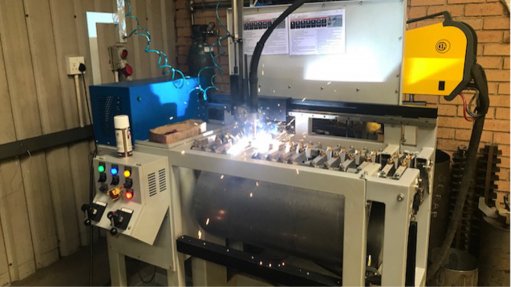
HIGHLY SPECIALISED INDUSTRY FST places importance on education and training, thereby equipping fire equipment suppliers and end-users with a sufficient knowledge on how to use fire suppresion products adequately
Fire suppression systems manufacturer and distributor Fire and Security Techniques (FST) advocates that national compliance and industry specific regulations be strictly monitored and adhered to. FST is a high-tech automatic fire suppression systems manufacturer under the Eckoshield trademark, an importer of fixed gaseous fire suppression systems and a distributor of fire detection equipment and pipe and fittings for the industry.
The pressure equipment regulations as noted in the Occupational Health and Safety Act, and the South African National Standard (SANS) 14520; 347 and 10040 Part T; enable fire protection authorities and associations to play a greater role in ensuring and enforcing fire safety regulations.
FST designs its products in accordance with the various standards and statutory regulations and boasts numerous certifications such as, but not limited to, ISO9001, ISO3834, and various product certifications under the South African Bureau of Standards, TUV Sud, TUV Rheinland and Bureau Veritas, ensuring that it provides designs for a complete solution. FST has a number of South African Qualifications Certification Committee- (SAQCC-) registered designers and also holds the BSI Kitemark for designing in accordance with SANS14520. When performing its designs there are various factors to take into consideration and FST has created a form that it requires its clients to complete to provide a solution that offers a total system for the client requirements.
“We design our systems in accordance with the SANS Standards, and not to NFPA Standards, as is dictated by the Department of Employment and Labour,” asserts FST commercial and compliance manager Hanlie Truter.
“The NFPA1710 Standard is used in environments where there is an immediate fire department response, this is between 4 minutes (Low Hazard), 8 minutes (Medium Hazard) and 10 minutes (High Hazard) for a fire truck to arrive on scene.”
Truter states that in some cases SANS14520 designs are not prescribed and that NFPA designs are used instead. She says that businesses tend to look for cheaper and easier methods of producing a uniform product, resulting in designing in accordance with the NFPA, which uses a lower design concentration as opposed to SANS, thus requiring less gas.
FST offers either engineered systems or modular cylinders when offering a suppression solution. Various factors are taken into consideration to ensure that the most cost-effective and solutions-based offer is provided to the end-user.
“FST fills discharged cylinders: these cylinders are decanted (when required), inspected, cleaned and tested, and when required, hydrotested as per SANS1825, whereafter they are filled,” Truter explains.
“However, it should be noted that in some cases FST cylinders are filled by other entities and may not be filled as per the original- equipment manufacturer’s (OEM’s) standards, using non-FST components, thus rendering the warranty null and void, and in some cases, [outcomes are] even worse, as not using OEM components can result in the systems malfunctioning or not discharging when activated,” production manager Andrew Crichton adds.
Truter stresses the importance of equipping end-users with sufficient knowledge on how their fire suppression and fire detection systems work. She notes that when systems are installed, they should be checked and signed off by an SAQCC Commissioner and the end-user must be given a copy of all relevant documents and be trained in the operation of the system.
In assessing the future development of the fire safety industry, FST comments that the insurance sector should play a key role in fire safety compliance by including exacting fire safety stipulations in its policy schedules when insuring prevention of loss of life, businesses, buildings and equipment.
Manufacturing Matters
FST manufactures all its clean agent cylinders and valves locally, and hails this as a competitive advantage for its clients as it shortens lead times and is more cost-effective. It adds that it is the only company that manufactures its own hardware for clean agent systems in South Africa. The company has ISO 3834, TUV Rheinland, TUV Sud and Bureau Veritas certification, which underpins and validates its ability to weld steel cylinders and manufacture valves to suite.
Established in 1994, the ISO9001-certified company ensures that its design and testing systems support every fire suppression system it supplies.
FST services a variety of industries, which include, but are not limited to, mining operations, data centres, marine applications and cold storage facilities.
The company stresses that the fire industry is niche and highly specialised. Thus, it also highlights education and training imperatives, asserting that without comprehensive product education, suppliers and end-users will be ill-equipped to use fire suppression products adequately.
The company also provides SAQCC product training for its clients to ensure that they have a better understanding of the systems and how to install the equipment.
“FST is at the forefront of the development of innovative and game-changing fire suppression products and these current developments will revolutionise the industry. 2024 will be an exciting year for the industry and for FST in particular,” Truter concludes.